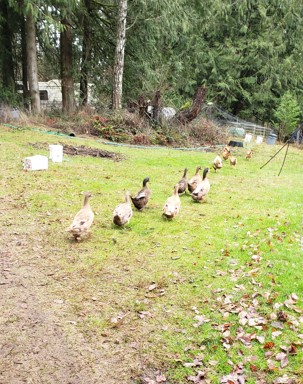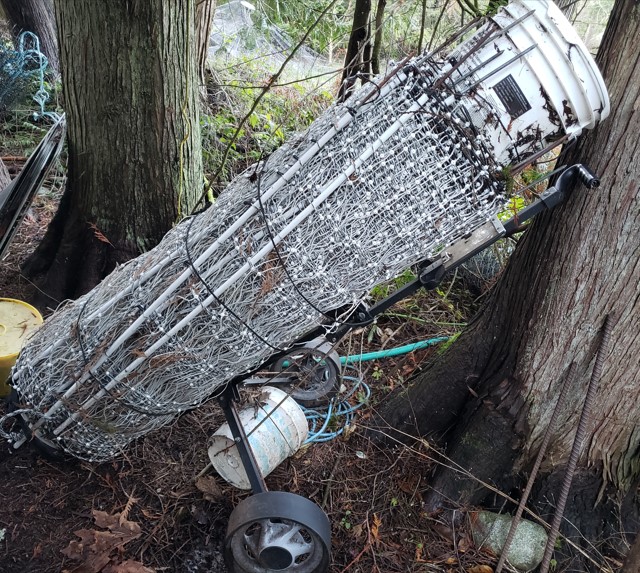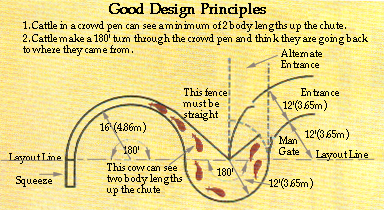


Garden Mastery Academy - Module 1: Dare to Dream
will be released to subscribers in:
soon!



 12
12





Community Building 2.0: ask me about drL, the rotational-mob-grazing format for human interactions.




Joy to You
 2
2




No man is an island.





 4
4




Community Building 2.0: ask me about drL, the rotational-mob-grazing format for human interactions.





 1
1




Community Building 2.0: ask me about drL, the rotational-mob-grazing format for human interactions.
 5
5




Visit Redhawk's soil series: https://permies.com/wiki/redhawk-soil
How permies.com works: https://permies.com/wiki/34193/permies-works-links-threads





 1
1




Jay Angler wrote:I admit I find electric mesh fencing a pain - particularly if having to set it up on my own.
I fastened 3 buckets together to make a wide core and rolled the fencing up around it. Then I stuck it on a salvaged golf cart. While I was getting it put together, Hubby bought a whole pile of Dog Exercise Pens:
1. 4 of those does a good enough job of a decent run for my ducks and chickens moved every 3 days.
2. broken into their sections of 8 panels, they're light enough for me to move easily short distances with one under each arm.
3. My chickens *can* get over them, but they prefer not to unless there's some problem, in which case the Rooster comes to a Human as if to say, "we need help"!
4. Unfortunately, the Ravens aren't deterred so I had to make up some netting for the top and that's a pain to move.
Hubby was very negative about me cutting our Chicken net fencing in half - I think it would get used if I only had to deal with half of it. Chickens want to move every day, or every 2 days, or ABSOLUTELY by the third day (the rooster told me so), so I'm actually better to have a smaller area moved more often, than a bigger area moved rarely.
There are places for electric fence of various types, but as a small homestead option with only one person trying to deal with it, it's got plenty of downsides. In a perfect world, I'd like a central secure house and a bunch of interconnected runs (14 or so) that they can cycle through just by me opening and closing pop-doors. Big up-front expense, but when I look at how long it takes me to move the portable stuff, it would be totally worth it.
Community Building 2.0: ask me about drL, the rotational-mob-grazing format for human interactions.
 2
2




Joshua Myrvaagnes wrote:The dog fencing is brilliant. You're saying it's like plastic hog panels, right? lightweight and semi-rigid?
Visit Redhawk's soil series: https://permies.com/wiki/redhawk-soil
How permies.com works: https://permies.com/wiki/34193/permies-works-links-threads





 2
2




Community Building 2.0: ask me about drL, the rotational-mob-grazing format for human interactions.
 2
2




Exactly! Or better yet, find/make some sort of sturdy portable fencing that can be placed at the edge of the electric fencing, that the pigs can be herded/bribed into, and contained there while you move the electric fencing. Even better, use some sort of a trailer so you can move the trailer with the pigs inside, onto the new patch of land you intend to enclose with the electric fence.Joshua Myrvaagnes wrote:next tip--time the paddock shift to right after the pigs have their distraction in their bowl and are eating. don't do another chore first. Plan to do the paddock shift first thing in the morning (just after daybreak and just before pigbreak, which is the time of day instants after daybreak when your pigs decide to break out).
Absolutely! Most of the people who speak highly of using electric fence as a regular paddock-shift system, have 3 or more people working for them and they all have a place in the process and work as a well-oiled machine. I've seen this in videos of both Geoff Lawton's farm and Joel Salatin's farm.Biggest pro tip: have your partner/friend/neighbor/enemy help you, it's 900000000x easier with another person to hold the other end of the thing. Like 15" of work instead of an hour and a half.



Visit Redhawk's soil series: https://permies.com/wiki/redhawk-soil
How permies.com works: https://permies.com/wiki/34193/permies-works-links-threads





 1
1




Community Building 2.0: ask me about drL, the rotational-mob-grazing format for human interactions.
 2
2





Absolutely! I think I'd intended to put the bucket tower of fencing on the ground and unroll from the buckets as I put the posts in. To be honest, I think I would need a vertical axis version on a large enough base and the wheels underneath the base to keep them away from the expletive's deleted fencing.--I don't have a trailer but I do have a cart; trying to move the fencing with the cart just proved more frustrating than not, and it got tangled up in the axels of the cart, and then I had to pry it out of there...
It really sounds like you need some sort of simple way to make a chute for the fencing - maybe put one end and the other end parallel for a section about 3 feet apart? You might have to attach an extra pair of fence posts to make it work, but the basic idea is to make a collection area with a "gate" at each end (which could be as simple as a piece of the net fencing) that allows you to entice the ducks (who tend to be groupies and stick together) into the chute and close the gate behind them, before opening the outer gate to lead them to the barn. If a pig gets in the way, it gives you time to redirect him before you're chasing them all over your land? I've not dealt with pigs, so I don't know how it would work in real life.Of course, the ducks might try to go for the hog feed--but they usually respond to the rattling bucket even if they already have feed

Visit Redhawk's soil series: https://permies.com/wiki/redhawk-soil
How permies.com works: https://permies.com/wiki/34193/permies-works-links-threads





 3
3




Community Building 2.0: ask me about drL, the rotational-mob-grazing format for human interactions.

 3
3




Hans Albert Quistorff, LMT projects on permies Hans Massage Qberry Farm magnet therapy gmail hquistorff
 2
2




 4
4




 5
5




Sucks to have small hands... It is physically impossible for me to hold the poles as you're describing using our length of electric mesh fencing. I tried when we first got it, as what you've written seemed like the sensible way to do it.R Sumner wrote:Yes it's easy to tangle or snag the mesh, especially on the ends of the poles. Again, the trick is to get the pole free and hold it tightly against the other poles.
Visit Redhawk's soil series: https://permies.com/wiki/redhawk-soil
How permies.com works: https://permies.com/wiki/34193/permies-works-links-threads
 3
3




Jay Angler wrote:
Sucks to have small hands... It is physically impossible for me to hold the poles as you're describing using our length of electric mesh fencing. I tried when we first got it, as what you've written seemed like the sensible way to do it.R Sumner wrote:Yes it's easy to tangle or snag the mesh, especially on the ends of the poles. Again, the trick is to get the pole free and hold it tightly against the other poles.
I'm beginning to wonder if some sort of a micro fork lift arrangement might work? Your idea, but not dependent on hand size.
"The only thing...more expensive than education is ignorance."~Ben Franklin. "We can easily forgive a child who is afraid of the dark; the real tragedy of life is when men are afraid of the light." ~ Plato
 4
4




Joshua Myrvaagnes wrote:
So I web searched, and found some article from a fence company that talks about a “double hot wire” or “hot/ground” fence, two terms that are very confusing, but that seem to be talking about having two hot wires braided together in the poly, the + and - wires, and the pig’s nose completes the circuit. No need for electric current to flow through the pig to the ground to the grounding wire.
Great, but they didn't sell anything called "double hotwire" or “hot/ground” fencing on their site, their helpline was automated and didn't give me any help, and there were no diagrams. I wasn't even sure whether the wire we already have is a double hot wire or not. They don't label things clearly.
So I called a friend, who is this an electrical engineer by training, and he gave me this brilliant suggestion, put chicken wire down on the ground in front of the fence and connect the ground wire to that, so when the pig walks toward the fence line, they're standing on the chicken wire and touching the fence with their nose.. Now the pig complete the circuit, ergo fried pig. (I used to be so nice to my animals, how have I gotten so jaded in one year?? Oh yeah, because of all the 63 times that they've escaped and wrecked my stuff and menaced the motorists passing by on the state highway!)
"All we have to decide is what to do with the time that is given us." ~ Tolkien
 3
3




Jay Angler wrote:Sucks to have small hands... It is physically impossible for me to hold the poles as you're describing using our length of electric mesh fencing. I tried when we first got it, as what you've written seemed like the sensible way to do it.
I'm beginning to wonder if some sort of a micro fork lift arrangement might work? Your idea, but not dependent on hand size.
 4
4





|
Do Re Mi Fa So La Tiny Ad
Rocket Mass Heater Resources Wiki
https://permies.com/w/rmh-resources
|




